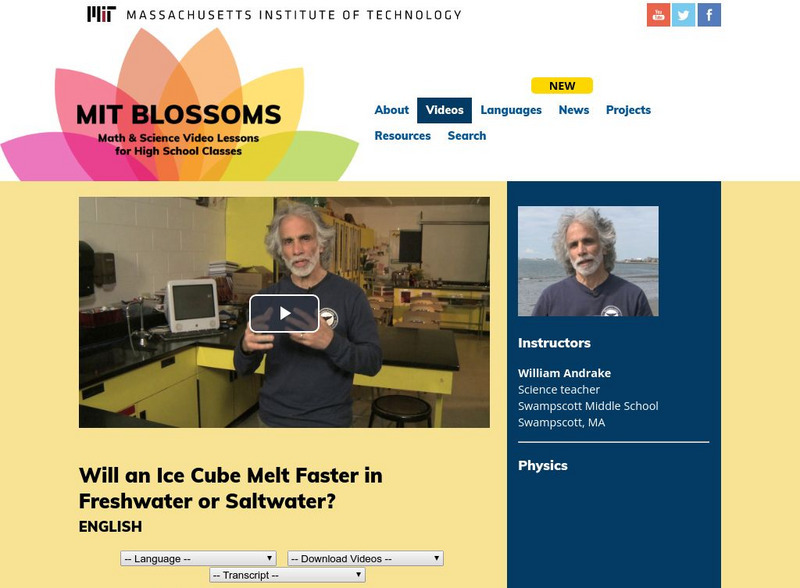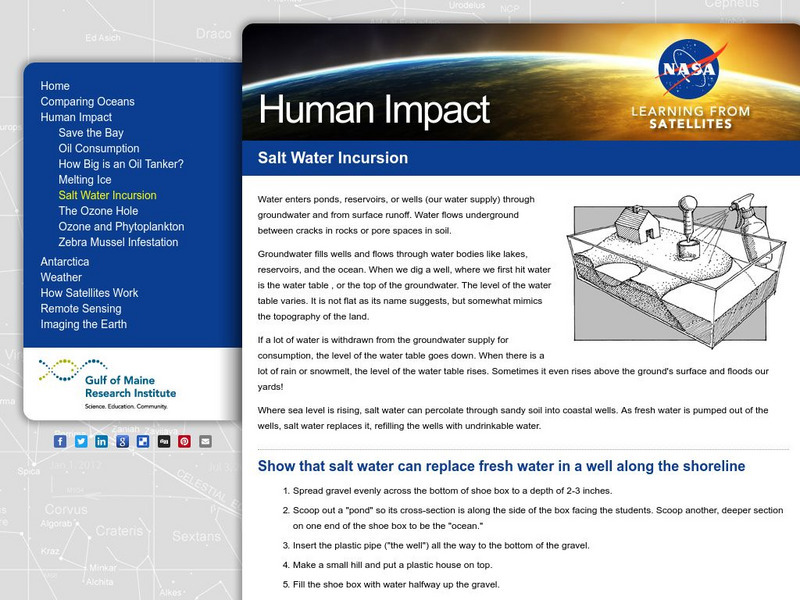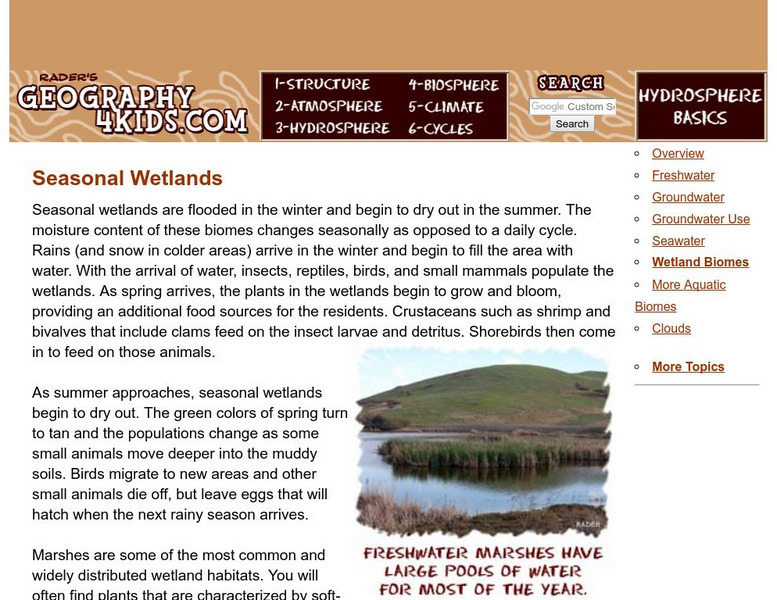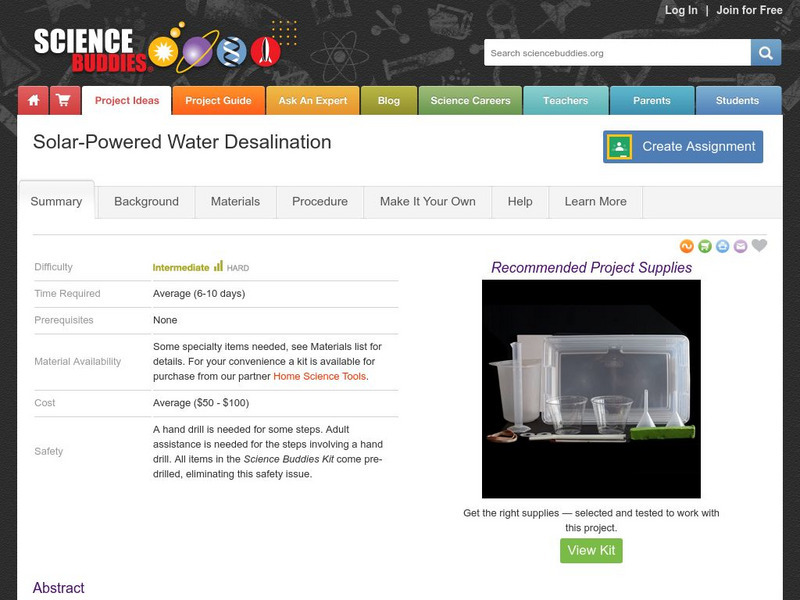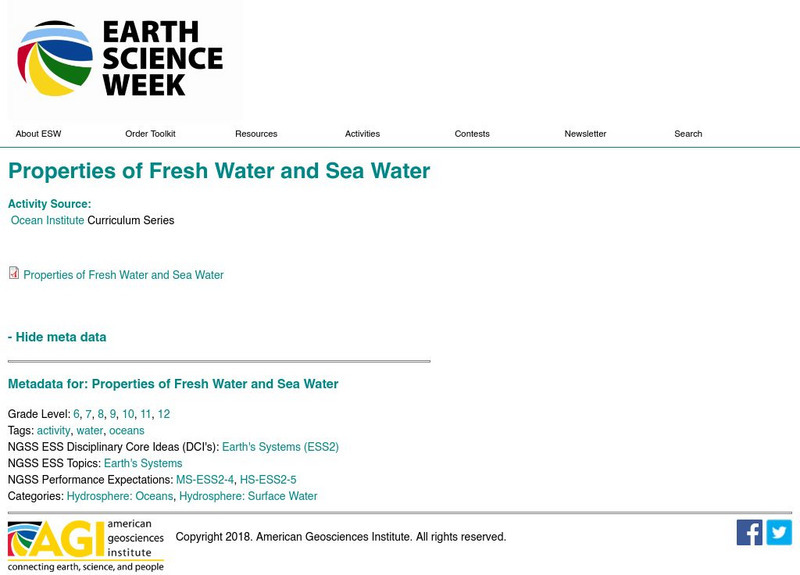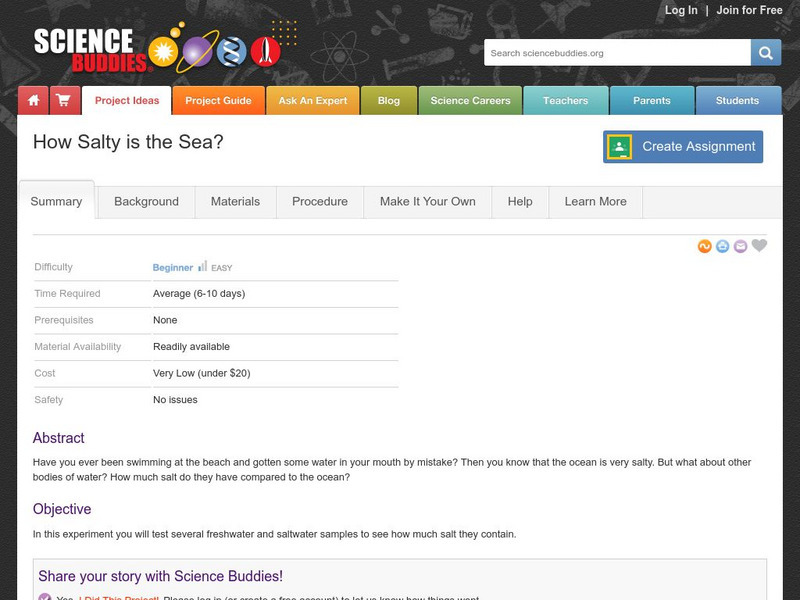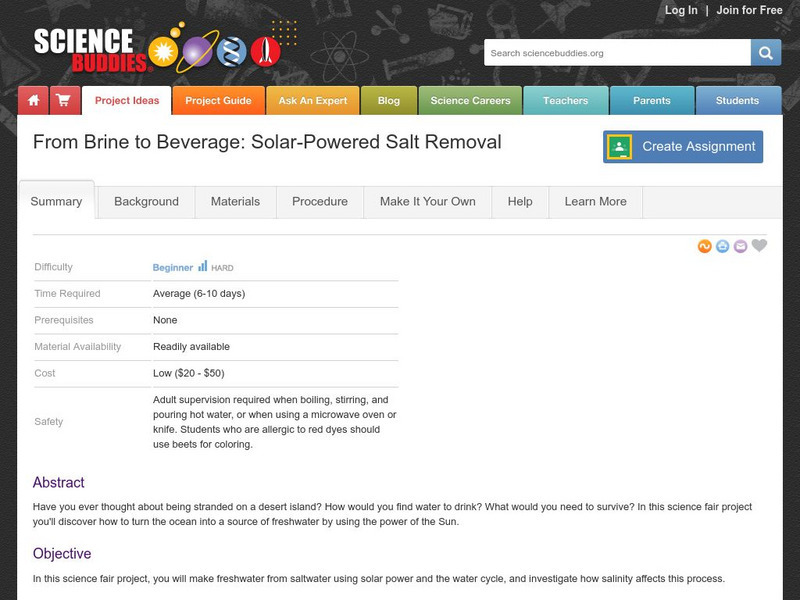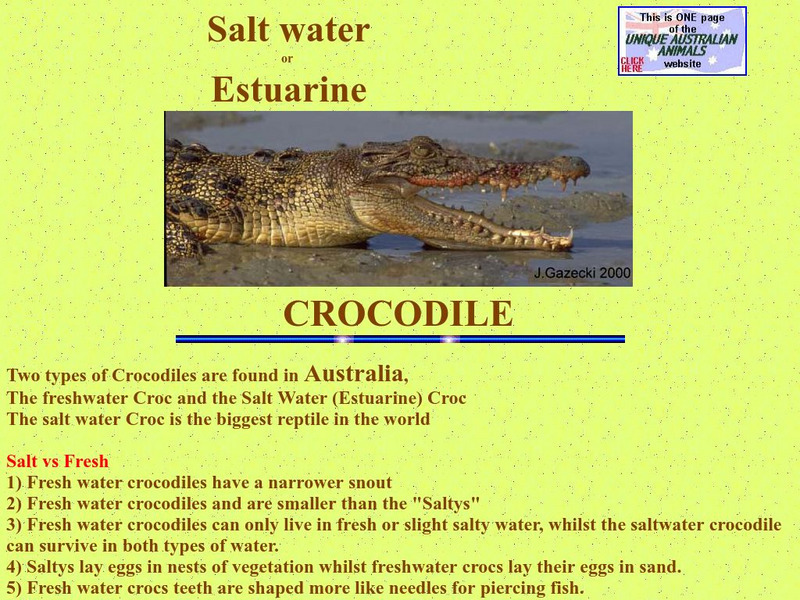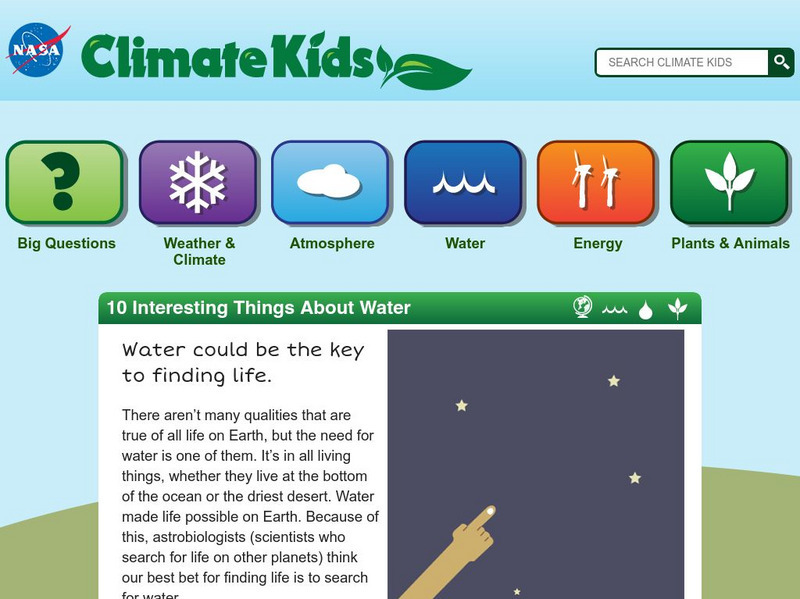Curated OER
Water World
Students explore the various steps of the water cycle. They identify the three steps in the water cycle and how they are related. Students describe three ways to conserve water. Students explore the origin of the water source that...
Curated OER
Maryland
In this Maryland reading comprehension worksheet, students read a 2-page selection regarding the state and they answer 10 true or false questions pertaining to the selection.
Curated OER
The Water Cycle: Crossword Puzzle
In this water cycle worksheet, students complete a 13 word crossword puzzle, using a set of given clues about the water cycle.
Massachusetts Institute of Technology
Mit: Blossoms: Will an Ice Cube Melt Faster in Freshwater or Saltwater?
Engage students in the study of the ocean and saltwater with these activities. Students will see that saltwater has different physical properties than freshwater - mainly density. This lesson can serve as a springboard into other...
Gulf of Maine Research Institute
Human Impact: Salt Water Incursion
Lesson plan shows students that salt water can replace fresh water in a well along the shoreline.
Geography 4 kids
Geography4 kids.com: Seasonal Wetlands
Identify the four types of seasonal wetlands found across the earth. There are fresh water and salt water marshes, bogs, and swamps.
Science Buddies
Science Buddies: Solar Powered Water Desalination
Here is a cool project about making fresh water from salt water using solar power, also known as water desalination. The apparatus is made from readily available materials, and the power source is free. As an inventive thinker, you will...
American Geosciences Institute
American Geosciences Institute: Earth Science Week: Properties of Fresh Water and Sea Water
Students set up three demonstrations to observe the properties of water. They explore the boiling point of water, the freezing point of water, and the ability of water to store heat.
Science Buddies
Science Buddies: How Salty Is the Sea?
Have you ever been swimming at the beach and gotten some water in your mouth by mistake? Then you know that the ocean is very salty. Bodies of freshwater also contain some salt, but much less compared to oceans. In this experiment you...
Tramline
Tramline: Salt Marshes Field Trip
Travel with your students on a virtual field trip to learn about saltwater marshes!
US Navy
Onr: Saltwater vs. Freshwater, Which Is Denser?
This site contains an experiment on how to find out which has more density -- freshwater or saltwater.
Science Buddies
Science Buddies: From Brine to Beverage: Solar Powered Salt Removal
In this science fair project you'll discover how to turn the ocean into a source of freshwater by using the power of the Sun, and the water cycle. You will ultimately find just how salinity affects this process.
US Geological Survey
Usgs: Earth's Water: Lakes and Reservoirs
The USGS reviews the differences between lakes and reservoirs. They discuss the history of freshwater and salt water lakes. Click Home to access the site in Spanish.
Scholastic
Scholastic: Study Jams! Science: Ecosystems: Aquatic Ecosystems
A video and a short multiple-choice quiz on the topic of aquatic ecosystems. It discusses the difference between freshwater and saltwater ecosystems, then explains what the three ecozones are in a marine ecosystem.
Unique Australian Animals
Unique Australian Animals:salt Water/estuarine Crocodile
Here you can learn all about salt water crocodiles. What makes them different than fresh water crocodiles? Where are they found? What kind of habitat do they live in?
Canadian Wildlife Federation
Hinterland Who's Who: Wetlands
Learn about Canada?s wetlands, what they are and where they are located. Wetlands are divided into two classes: freshwater and saltwater. They are further separated into four main types: ponds, marshes, swamps, and peatbogs. Discover the...
NOAA
Noaa: Estuaries 101 Curriculum: Nutrients in an Estuary
An overload of nutrients, called eutrophication (Greek for "good-nutrition"), can be harmful to estuaries. This phenomenon is also referred to as "over-enrichment," or "nutrient pollution". Students will investigate the range of...
TeachEngineering
Teach Engineering: One World Ocean
In this activity, students learn about ocean currents and the difference between salt and fresh water. They use colored ice cubes to see how cold and warm water mix and how this mixing causes currents. Also, students learn how surface...
University of Utah
University of Utah: Genetics Science Learning Center: Stickleback Evolution
Compare the freshwater stickleback with its saltwater relative and trace the evolutionary changes of the fish. Includes a lecture by Dr. David Kingley, as well as an animation showing the evolution of the stickleback in an Alaskan lake.
NOAA
Noaa: National Ocean Service Education: Estuaries
Illustrated tutorial explains estuary ecosystems. Animations and illustrations help students become more familiar with the plant and animal communities which make up this coastal habitat.
NASA
Climate Kids: 10 Interesting Things About Water
Discover 10 very interesting things about water, including sources of life, ocean ecosystems, freshwater and ice, salt and salt water, sources of water, the body's water makeup, plant's consumption of water and the 3 states of water.
HotChalk
Hot Chalk: Lesson Plans Page: Aquatic Wildlife and Pollution
This lesson plan is designed to teach young children about healthy and hazardous marine and freshwater environments and be able to describe the effects of the pollution of plastics on wildlife.
American Institute of Biological Sciences
Action Bioscience: Seawater Desalination: Panacea or Hype?
An article and resources for research and teaching that explains how technologies are being used to desalinate ocean waters to be used for various municipal, industrial, and domestic purposes including a means to provide fresh water to...
Utah STEM Foundation
Utah Stem Action Center: Floating on the Great Salt Lake
Through exploring the phenomenon that it is easier to float on salt water than on fresh water, learners will develop a conceptual model for molecules and how the arrangement of molecules affects density.





